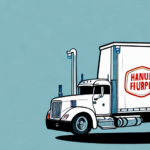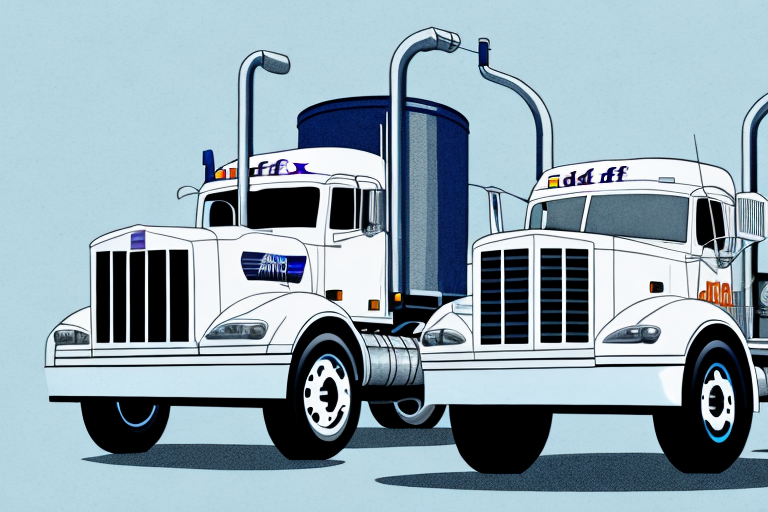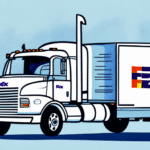Importance of Efficient Delivery Routes
For business owners and delivery companies, planning an efficient delivery route is pivotal to operational success. Efficient routes not only ensure timely deliveries but also significantly reduce operational costs. According to a Forbes report, optimizing delivery routes can lead to a reduction in fuel consumption by up to 30%, directly impacting the bottom line.
Moreover, efficient delivery routes enhance customer satisfaction by ensuring orders arrive on time, fostering repeat business and positive word-of-mouth referrals. Additionally, streamlined routes contribute to lower greenhouse gas emissions, supporting sustainability goals and appealing to environmentally conscious consumers.
Planning Your Delivery Route: Key Factors and Steps
Factors to Consider
- Distance Between Delivery Points: Minimizing travel distance reduces fuel consumption and time.
- Traffic Conditions: Understanding peak traffic hours and common congestion areas can prevent delays.
- Weather Conditions: Extreme weather can impact travel times and safety, necessitating real-time adjustments.
- Type and Size of Products: Certain goods may require special handling or temperature-controlled transportation.
- Availability of Parking Spaces: Limited parking can cause delays in loading and unloading.
- Delivery Deadlines: Ensuring that deliveries meet customer expectations within specified timeframes.
Steps to Develop an Effective Route Plan
- Research the Delivery Area: Analyze the layout, including gated communities and restricted access zones.
- Assess Resources: Determine the number of available drivers and vehicles to allocate deliveries efficiently.
- Understand Customer Preferences: Collect data on preferred delivery times and locations to tailor routes accordingly.
- Plan for Special Requirements: Accommodate any special handling needs based on the products being delivered.
Tools and Technology for Route Optimization
Delivery Planning Software
Modern delivery planning software, such as Route4Me, Routific, and MyRouteOnline, utilize real-time traffic data and advanced algorithms to design the most efficient routes. These tools can dynamically adjust plans based on unexpected traffic conditions, ensuring minimal delays.
Telematics Systems
Telematics systems from providers like Geotab and Verizon Connect offer comprehensive vehicle tracking and performance analytics. These systems provide insights into fuel efficiency, maintenance needs, and driver behavior, enabling businesses to make informed decisions that enhance overall fleet efficiency.
Customer Relationship Management (CRM) Software
Tools such as Salesforce and HubSpot help manage customer information, including delivery preferences and order history. By leveraging CRM data, businesses can customize delivery routes to meet individual customer needs, thereby improving satisfaction and loyalty.
Strategies for Cost and Time Savings
Route Optimization
Minimizing travel time and reducing fuel consumption are primary goals of route optimization. Utilizing GPS technology and route planning software can identify the most efficient paths, avoiding unnecessary detours and traffic delays. According to a study by ScienceDirect, optimized routing can decrease delivery times by up to 25%.
Consolidating Deliveries
Grouping deliveries within the same geographic area reduces the number of stops and overall travel distance. This consolidation not only saves fuel but also allows for more deliveries within the same timeframe.
Scheduling Deliveries During Off-Peak Hours
Planning deliveries during times of lower traffic can significantly reduce travel time and fuel usage. Off-peak scheduling also enhances the likelihood of on-time deliveries, contributing to higher customer satisfaction.
Best Practices for Managing Deliveries and Customer Communication
Effective Communication
Keeping customers informed about their delivery status through regular updates fosters trust and satisfaction. Implementing automated notifications via SMS or email can keep customers aware of their delivery timeline and any potential delays.
Managing Multiple Deliveries
When handling multiple deliveries, ensuring that the delivery vehicles are not overloaded and that goods are securely stored is critical. Proper space management within vehicles prevents damage to goods and maintains delivery efficiency.
Feedback Mechanisms
Establishing channels for customer feedback allows businesses to address concerns promptly and make necessary improvements. Satisfied customers are more likely to become repeat clients and advocate for the business.
Measuring Success and Continuous Improvement
Key Performance Indicators (KPIs)
- Fuel Consumption: Monitoring fuel usage helps identify areas for cost reduction.
- Delivery Time: Tracking average delivery times ensures deadlines are consistently met.
- Customer Satisfaction: Surveys and feedback provide insights into service quality.
- On-Time Delivery Rate: Measuring the percentage of deliveries made on schedule.
Continuous Monitoring
Using delivery management software to track and analyze route performance in real-time enables businesses to identify inefficiencies and implement timely improvements. Regular reviews of delivery data help in refining strategies and enhancing overall efficiency.
Avoiding Common Planning Mistakes
Planning an efficient delivery route involves avoiding several common pitfalls:
- Incomplete Route Mapping: Failing to account for all delivery points can lead to missed or delayed deliveries.
- Neglecting Traffic Patterns: Ignoring typical traffic conditions can result in unexpected delays.
- Overloading Drivers: Assigning excessive deliveries to drivers can compromise service quality and driver safety.
- Lack of Technology Integration: Not utilizing available tools and software can hinder route optimization efforts.
By addressing these mistakes, businesses can enhance their delivery efficiency and maintain high service standards.
Conclusion
Designing an efficient delivery route plan is essential for the success of businesses that rely on timely and cost-effective deliveries. By considering key factors, leveraging advanced tools and technology, implementing cost and time-saving strategies, maintaining effective communication with customers, and continuously measuring performance, organizations can optimize their delivery operations. Avoiding common planning mistakes further ensures that delivery routes are as efficient and reliable as possible. Adopting these best practices not only enhances profitability but also builds strong customer relationships, driving long-term business success.




















